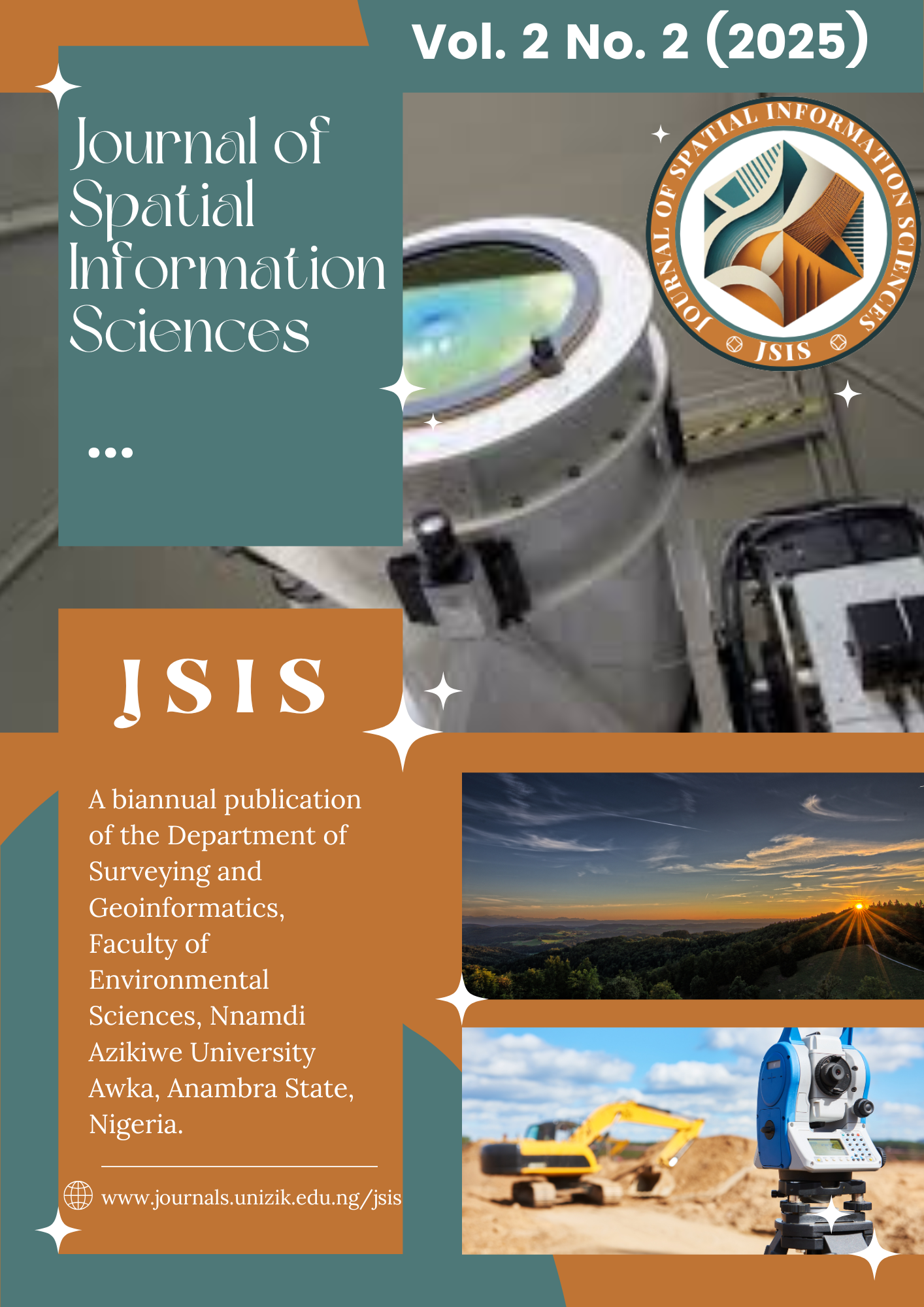Utilising a unique method to monitor Large Oil Storage Tanks' deformations via Interferometric Synthetic Aperture Radar (InSAR)
DOI:
https://doi.org/10.5281/zenodo.15668223Keywords:
Oil Storage Tanks, Synthetic Aperture Radar (SAR), Differential Synthetic Aperture Radar (DInSAR), Distortion, DeformationAbstract
A method for monitoring the deformation of big oil storage tanks is proposed in this study. The method makes use of the Interferometric Synthetic Aperture Radar (InSAR) methodology. The purpose of this endeavour is to propose a solution that addresses the problem of oil spillage that occurs as a result of the collapse of oil storage tanks. If massive oil storage tanks were to fail, it might have catastrophic consequences, including the loss of lives and property, the contamination of aquatic life, and the filing of lawsuits, among other things. Thus, the focus was on Forcados, Warri, Delta State, Nigeria as the location of the research area. The satellite imagery that was utilised was obtained from the Sentinel-1 Synthetic Aperture Radar (SAR) satellite hub of the European Space Agency (ESA) between 12 months, covering the months of March 2016 until March 2017. To determine the state of these engineering structures and to identify any significant deviations from their original design, it is pertinent to perform periodic monitoring of these structures from time to time. For the detection of likely displacements as well as validating deformations measured upon the crude oil storage tank, a technology known as the Small Baseline Subset Differential Interferometric Synthetic Aperture Radar (SBAS-DInSAR) approach was utilised. It was paired with an Object-Based Image Analysis (OBIA) approach to analyse the data. One of the 10 tanks that are located within the research area is used to illustrate the validation analysis. This tank is number seven. According to the findings, the horizontal distortions across the circular cross-section of the 7th Tank fall somewhere in a spectrum of -29.669mm and -3.131mm over the course of the study.
Downloads
Published
Issue
Section
License

This work is licensed under a Creative Commons Attribution-ShareAlike 4.0 International License.





